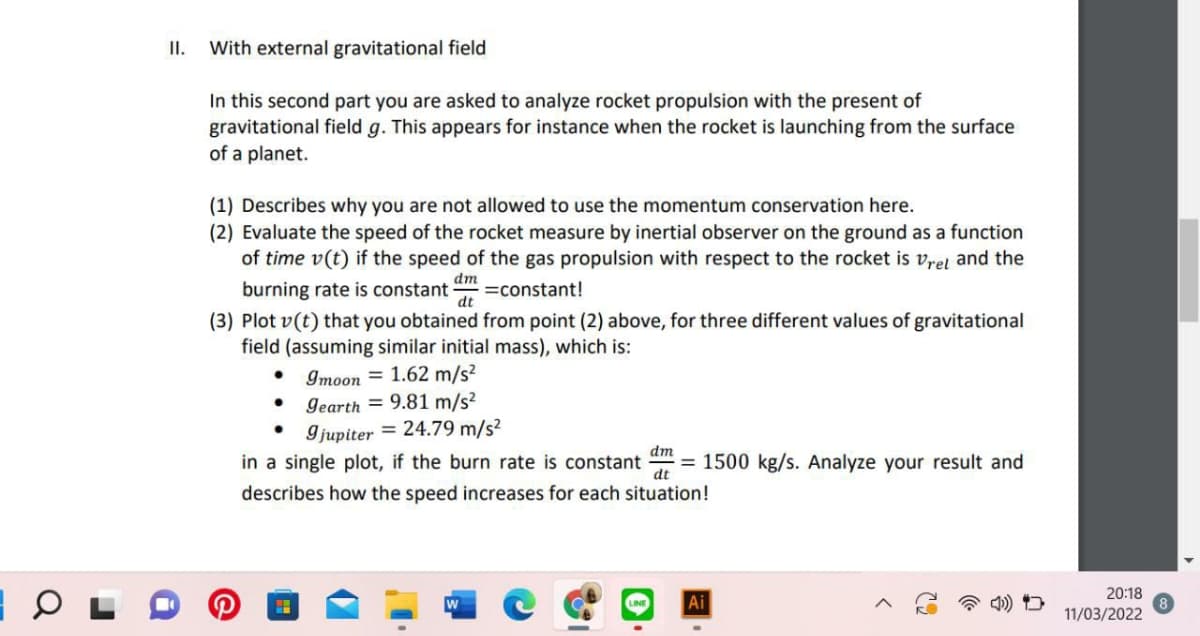II. With external gravitational field In this second part you are asked to analyze rocket propulsion with the present of gravitational field g. This appears for instance when the rocket is launching from the surface of a planet. (1) Describes why you are not allowed to use the momentum conservation here. (2) Evaluate the speed of the rocket measure by inertial observer on the ground as a function of time v(t) if the speed of the gas propulsion with respect to the rocket is vrel and the burning rate is constant dm =constant! dt (3) Plot v(t) that you obtained from point (2) above, for three different values of gravitational field (assuming similar initial mass), which is: • 9moon = 1.62 m/s? Gearth = 9.81 m/s? Ijupiter = 24.79 m/s² %3D %3D in a single plot, if the burn rate is constant dm %3D dt = 1500 kg/s. Analyze your result and describes how the speed increases for each situation!
Gravitational force
In nature, every object is attracted by every other object. This phenomenon is called gravity. The force associated with gravity is called gravitational force. The gravitational force is the weakest force that exists in nature. The gravitational force is always attractive.
Acceleration Due to Gravity
In fundamental physics, gravity or gravitational force is the universal attractive force acting between all the matters that exist or exhibit. It is the weakest known force. Therefore no internal changes in an object occurs due to this force. On the other hand, it has control over the trajectories of bodies in the solar system and in the universe due to its vast scope and universal action. The free fall of objects on Earth and the motions of celestial bodies, according to Newton, are both determined by the same force. It was Newton who put forward that the moon is held by a strong attractive force exerted by the Earth which makes it revolve in a straight line. He was sure that this force is similar to the downward force which Earth exerts on all the objects on it.

Step by step
Solved in 5 steps with 1 images







